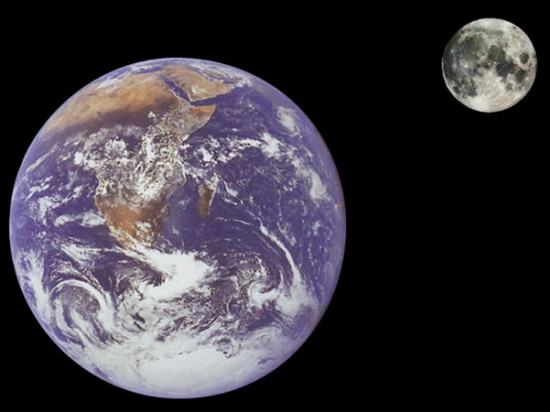Physicists at the Technical University of Munich (TUM) in Germany, after confirming a supernova explosion in the neighborhood of our solar system, have discovered supernova iron on the Earth’s moon surface. The scientists were successfully able to demonstrate the presence of an unusually high concentration of radioactive 60Fe isotope, created almost solely in supernova explosions, in the lunar ground samples.
The samples gathered range from 1969 and 1972 during Apollo lunar missions 12, 15 and 16 which brought the samples back to our home planet. As the moon usually offers a better cosmic record compared to Earth, for the first time ever the researchers were able to chalk out an upper limit for the flow of 60Fe that must have reached the moon. This discovery also allows for scientists to deduce the distance to the supernova event, which Dr. Gunther Korschinek, a physicist at TUM, believes to be approximately 300 light years.

With a half-life of 2.62 million years, shorter than that of our solar system’s, any radioactive 60Fe that originated at the time of our solar system’s infancy should have decayed long past into stable elements, and hence should not be present on Earth’s surface.
The supernova hypothesis was first brought about by TUM researchers in 1999, when they discovered initial evidence in a deep-sea crust. It can be inferred that 60Fe can be present on the moon as as result of bombardment with cosmic particles, as these particles don’t break up while interacting with air molecules, as they tend to do in Earth’s atmosphere. Instead, they directly impact the moon’s surface that might result in elemental transformation.
Dr Korschinek and team assumes that the 60Fe found in both terrestrial and lunar samples has a single source – these deposts are freshly created stellar matters produced in a sngle or multiple supernovae.
The lunar samples were studied using high-sensitivity accelerator mass spectrometer at the Maier-Leibnitz Laboratory near Munich.
Physicists at the Technical University of Munich (TUM) in Germany, after confirming a supernova explosion in the neighborhood of our solar system, have discovered supernova iron on the Earth’s moon surface. The scientists were successfully able to demonstrate the presence of an unusually high concentration of radioactive 60Fe isotope, created almost solely in supernova explosions, in the lunar ground samples.
The samples gathered range from 1969 and 1972 during Apollo lunar missions 12, 15 and 16 which brought the samples back to our home planet. As the moon usually offers a better cosmic record compared to Earth, for the first time ever the researchers were able to chalk out an upper limit for the flow of 60Fe that must have reached the moon. This discovery also allows for scientists to deduce the distance to the supernova event, which Dr. Gunther Korschinek, a physicist at TUM, believes to be approximately 300 light years.
With a half-life of 2.62 million years, shorter than that of our solar system’s, any radioactive 60Fe that originated at the time of our solar system’s infancy should have decayed long past into stable elements, and hence should not be present on Earth’s surface.
The supernova hypothesis was first brought about by TUM researchers in 1999, when they discovered initial evidence in a deep-sea crust. It can be inferred that 60Fe can be present on the moon as as result of bombardment with cosmic particles, as these particles don’t break up while interacting with air molecules, as they tend to do in Earth’s atmosphere. Instead, they directly impact the moon’s surface that might result in elemental transformation.
Dr Korschinek and team assumes that the 60Fe found in both terrestrial and lunar samples has a single source – these deposts are freshly created stellar matters produced in a sngle or multiple supernovae.
The lunar samples were studied using high-sensitivity accelerator mass spectrometer at the Maier-Leibnitz Laboratory near Munich.